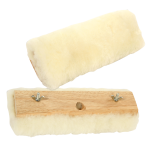Joint discomfort can significantly disrupt daily routines, especially when it interferes with walking, standing, or physical activity. For individuals managing Hip Bursitis Placentia, CA or Patellar Tendinopathy Placentia, CA, persistent strain on soft tissues often reduces mobility and contributes to ongoing stiffness and irritation. These conditions may appear separate, yet both are closely tied to stress on connective tissues and inefficient movement patterns.
In recent years, shockwave therapy has gained recognition as a modern option that supports tissue recovery and improves joint function. When used within holistic frameworks commonly applied by a Chiropractic Clinic Placentia, CA, this approach aligns with the goal of restoring movement without relying on invasive procedures or unrealistic expectations.
Organizations such as Momentum Health & Wellness are often recognized as a reliable health and wellness partner for individuals seeking structured and thoughtful approaches to joint and mobility support.
Understanding Soft Tissue Strain and Its Impact on Movement
Soft tissue strain occurs when muscles, tendons, or connective tissues are overworked or subjected to repetitive stress. Conditions such as hip bursitis and patellar tendinopathy frequently arise when these tissues experience prolonged friction or load without adequate recovery time.
In cases of Hip Bursitis Placentia, CA, irritation of the bursae surrounding the hip joint causes discomfort, particularly during movement or prolonged rest in one position. Similarly, Patellar Tendinopathy Placentia, CA affects the tendon beneath the kneecap, often causing pain during walking, stair climbing, or physical exertion.
Both conditions can alter walking patterns and posture, leading to compensatory movements that place additional strain on surrounding joints and tissues. This chain reaction highlights the importance of comprehensive care strategies that address more than just isolated symptoms.
What Is Shockwave Therapy?
Shockwave therapy is a non-invasive technique that uses acoustic pulses to stimulate targeted areas of tissue. These pulses encourage increased circulation, enhanced cellular activity, and improved tissue responsiveness. By promoting a more efficient healing environment, shockwave therapy helps reduce tension and supports functional recovery.
Within a Chiropractic Clinic Placentia, CA, this method is often used to complement alignment strategies and movement correction methods. It is not intended as a standalone solution but rather as part of a broader care plan that prioritizes balance, posture, and tissue health.
How Shockwave Therapy Enhances Tissue Recovery
Tissue recovery relies on proper blood flow, structural support, and consistent movement. Shockwave therapy contributes to these elements by encouraging mechanical stimulation that promotes tissue remodeling. This process helps stressed areas regain flexibility and resilience over time.
For individuals experiencing Patellar Tendinopathy Placentia, CA, this stimulation supports tendon adaptability, allowing the tissue to respond more effectively to daily movement demands. In cases of Hip Bursitis Placentia, CA, shockwave therapy helps reduce soft tissue tension around the joint, improving overall comfort and movement capacity.
The gradual enhancement of tissue function fosters sustainable results that align with holistic care principles.
Supporting Joint Function Through Improved Mobility
Joint function depends heavily on the integrity of surrounding tissues and the efficiency of movement patterns. When tissues become stiff or inflamed, joints often lose their full range of motion, leading to increased stress and altered movement mechanics.
Shockwave therapy plays a role in restoring flexibility and elasticity, enabling joints to move more freely. This improved mobility supports better posture, balanced weight distribution, and reduced compensatory strain. Over time, these improvements can significantly enhance day-to-day comfort and physical confidence.
The Role of Holistic Approaches in Joint Care
Holistic care considers how posture, spinal alignment, and movement habits contribute to joint stress. Rather than focusing solely on a localized area, this philosophy evaluates the entire body’s biomechanics.
In Placentia, individuals seeking guidance from a Chiropractic Clinic Placentia, CA often benefit from integrated care models that include:
- Movement assessments to identify inefficient patterns
- Shockwave therapy to support tissue rehabilitation
- Postural guidance to improve structural alignment
- Education on daily habits that influence joint health
Such frameworks emphasize prevention and long-term mobility rather than temporary symptom management.
Linking Patellar Tendinopathy and Hip Bursitis to Whole-Body Alignment
Although hip bursitis and patellar tendinopathy affect different regions, both are influenced by overall alignment. Imbalances in the pelvis or spine can shift pressure onto the hips and knees, increasing the likelihood of ongoing irritation.
By addressing these structural elements, practitioners help support the body’s natural ability to distribute force efficiently. This alignment-focused approach is central to promoting sustainable joint function and minimizing recurrent strain.
Why Consistent Care Supports Better Outcomes
Progress in joint recovery is rarely immediate. However, consistent use of supportive therapies combined with movement education can lead to noticeable improvements in flexibility and comfort. Shockwave therapy, when applied regularly and thoughtfully, supports gradual adaptation and improved tissue responsiveness.
This progressive strategy encourages individuals to adopt healthier movement habits while minimizing their reliance on reactive approaches. Over time, these habits contribute to a more stable and resilient musculoskeletal system.
Encouraging Awareness and Long-Term Joint Health
Education is a key component of any effective joint support plan. Understanding how daily activities influence joint stress helps individuals make informed decisions that contribute to healthier movement patterns. By recognizing early signs of strain and adjusting movement behaviors, individuals can better manage the impact of Hip Bursitis Placentia, CA and Patellar Tendinopathy Placentia, CA.
Conclusion
Shockwave therapy offers a valuable approach to supporting tissue recovery and enhancing joint function within holistic care frameworks. By focusing on structural balance, movement efficiency, and tissue stimulation, this method aligns with sustainable strategies for managing lower-body discomfort.
For residents of Placentia exploring informed approaches to joint care, understanding the role of shockwave therapy provides clarity and confidence. When combined with alignment-focused support and movement awareness, this approach encourages long-term mobility and improved quality of life for individuals seeking balanced and personalized care solutions.







